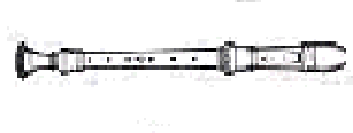

Four bass recorders @ $250 per instrument and four tenors @ $60 each, would fulfill my dream should my school give the music department an unlimited budget for next year. "Utopia" would be additional finance for a contrabass recorder--$4,000 and up--to be played in my recorder orchestra (synthesizer keyboard may be substituted). With these instruments as a nucleus, implementation of a recorder orchestra, bass recorder ensemble, and many SATB groups would be a possibility; not only for the students at my school, but for the development of a continuing education community ensemble. As sopranos, altos, and sopraninos would be provided by members, cost of purchasing these instruments would be eliminated.
For many who have not experienced the cohesive sound, personal satisfaction, and musicality of group recorder ensemble playing, recorder orchestra (very popular in Europe), and bass ensemble provide a very musical opportunity for participation, especially at the junior- and senior-high level. Bass ensemble (three basses or more), produces a unique musical timbre that is better experienced than described because of its lightness, harmonic complexity, and cohesiveness of blend. Because bass recorders allow for a high degree of technical dexterity, many styles of music from easy to demanding can be accommodated. The fresh and unusual timbral quality generates and maintains listener interest, as does the somewhat different apprearance of the bass. Recorder orchestra is totally fulfilling, fun, and the lower instruments provide balance to the brilliant and sometimes shrill characteristics of altos and sopranos. With a full range of pitches, orchestral transcriptions have been arranged to include Bach, Mozart, Mussorgsky, modern composers, and contemporary compositions that are being written specifically for the tonal resources of this particular ensemble and the idiomatic characteristics of the recorder.
Recorder arrangements for small ensembles that include mixed combinations of the recorder (sopranino, soprano, alto, tenor, bass, great bass in c, contra bass) are plentiful, exciting, and interesting. In addition to the traditional classical compositions from all periods, arrangements of Stars and Stripes Forever, Hallelujah Chorus, Take Five, and The Waltz of the Flowers, provide variety and contrast for young performers while creating interest at concerts.
The best online source for information on Recorder may be found on The Recorder Home Page that has been developed by Nicholas Lander. This page is highly comprehensive and is a must bookmark for anyone desiring information about the recorder.
The American Recorder Society (Post Office Box 631, Littleton, CO, 80160) sponsors many workshops during the year with meetings on Saturdays and evenings and major workshops held during summer months. In addition to publishing an attractive and informational journal (The American Recorder), ARS promotes a strong Junior Recorder Society program, which actively recruits members from school-age children, and provides, through its chapters, opportunities for students to perform both individually and in various ensembles. You can start a chapter quite inexpensively at your school and information is available from the ARS at the previously mentioned address (e-mail address:74363.3365@compuserve.com). The Web page address for ARS is: http://ourworld.compuserve.com/homepages/recorder/ .
Quality recorder playing is demanding, requiring good breath support, intonation, phrasing ability, and practice needed to play in more difficult keys, while utilizing various articulations. Technically, the recorder, studied seriously, is a demanding instrument that will challenge the musicianship of the best musician. Unfortunately, quality playing, at times, is not achieved in the public schools as the instrument is looked upon as something of a toy. This occurs because students and teachers have not experienced musical and sensitive playing, or received relevant instruction, and have not had the enjoyment of performing in varied ensembles, usually not organized because of the unavailability of lower instruments needed to fill out bass and tenor parts.
An unlimited budget, although desirable, is not a necessity in developing recorder ensembles. What IS needed is a desire to: (a) implement a program, (b) start a student chapter, (c) seek out appropriate music, (d) attend workshop sessions, and (e) begin a program by purchasing the required lower instruments, one at a time, over several years. A music teacher who pursues these steps will find a new, neat, attractive, and musical medium which will attract students in the regular choral and band programs in addition to many students who may not play or sing in the music program but wish to attain a high level of musical skill and enjoyment. Outreach activities to those of the community are also possible as there may be many adults who already own instruments but have no place to play in a group situation.
